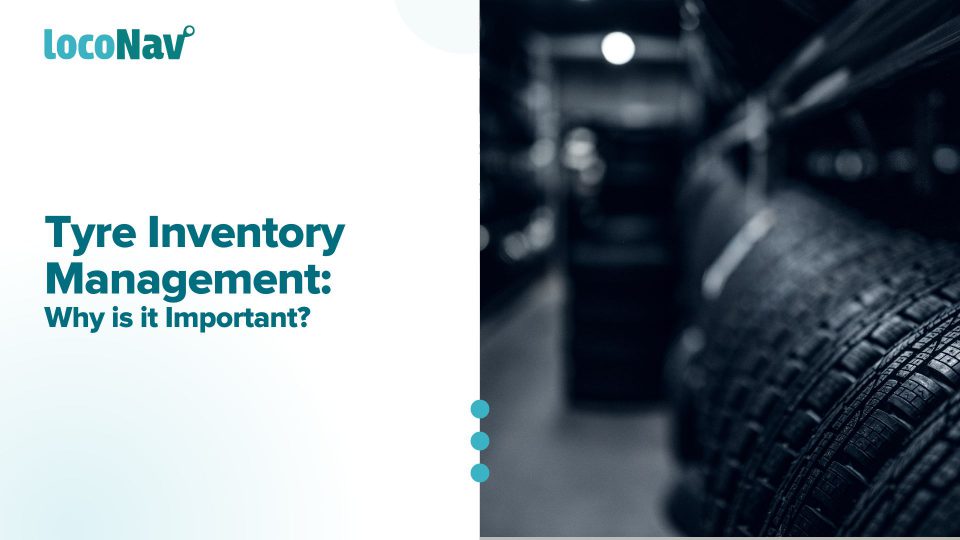

Lack of tyre maintenance can cause premature wear or even accidents on the road. As a result, some of the industry’s most pressing issues today are tyre reliability and inventory management issues.
Many people still rely on industry best practices and physical checks to track tyre health and air pressure. However, there may be gaps in the procedure at times, resulting in tyre-related concerns in the long term. To optimise this process and get up-to-date information on the entire fleet, fleet management and logistics management require technology-aided solutions.
In this blog, we will discuss the importance of managing your fleet’s tyre inventory.
Manage your fleet efficiently with LocoNav’s Fleet Management Solutions!
Why Do You Need A Tyre Management System?
The tyre management system is a crucial component as well as a costly asset of the vehicle. To keep your vehicle running smoothly, you must first take adequate care of its assets, one of which is the tyre. Aside from that, in many situations, drivers switch to new tyres for their old tyres and sell the new tyres in the market.
Drivers commit fraud in this manner, which is quite dangerous for your car because an old tyre is prone to an accident or a sudden mid-way breakdown. As a result, as a business owner, you should be aware of all such scams and utilise a tyre inventory management system to track every aspect of tyres in use.
How Can Tyre Inventory Management Improve Fleet Operations?
Here are the multiple ways tyre inventory management can benefit your fleet business.
- Reduced Administrative Effort
Managing a vehicle fleet entails dealing with multiple vendors, multiple invoices, and multiple currencies. Life gets so much easier when everything is managed via a single, centralised system. Managing tyre inventory allows you to maintain control while reducing administrative effort and costs.
- Reduced Downtime
Tyre-related issues are a key source of costly downtime unless you anticipate them and take action. TPMS sensors provide you with real-time tyre health data. As a result, you can act before suffering damage or downtime. Tyre inventory management allows you to perceive failure and have extra inventory on hand to minimise vehicle downtime.
- Quicker Maintenance
Manually monitoring the pressure and condition of each tyre consumes time and money. Using a tyre management system, you may cut maintenance expenses and vehicle downtime. Then you can schedule regular preventative tyre maintenance and improve tyre inventory management.
LocoNav Tyre Management Module for Tyre Inventory Management
LocoNav has recently launched a suite of features specific to tyre management, the Tyre Management Module. Here are the top three Tyre Management module features that will make tyre inventory management easier:
- Tyre Inventory in Digital Form
Add new or used tyres to your fleet dashboard, along with information on the manufacturer, running distance, wear depth, and purchasing and discarding. Users will be able to view all of their tyres in one spot once they have been added.
- Record of Tyre Assignment
Users will be able to see details regarding tyre count, tyre category, Total tyres available, tyres assigned to a vehicle, and tyres assigned to inventory.
- Detailed Data Download
Download a full inventory of your tyres (tyre count, kind, status, vehicle number, brand name, model name, tyre size, tread depth, running distance, Consumption % of a Tyre’s life) in CSV format.
IoT Sensors for All Round Tyre Management
IoT sensors and Bluetooth devices are increasingly gaining traction due to their ease of use and hassle-free monitoring. Here’s how these sensors can help fleet managers:
- They can take preventive maintenance activities based on sensor alerts such as low battery, coolant temperature, engine operating, and so on.
- Managers may track each vehicle’s fuel efficiency using smart tyre sensors and make useful changes to the driver’s acceleration and deacceleration routines, braking habits, speed control, and other factors.
- Sensors enable fleets to automate and streamline operations, allowing them to acquire total awareness of each vehicle in the fleet and track them effectively.
